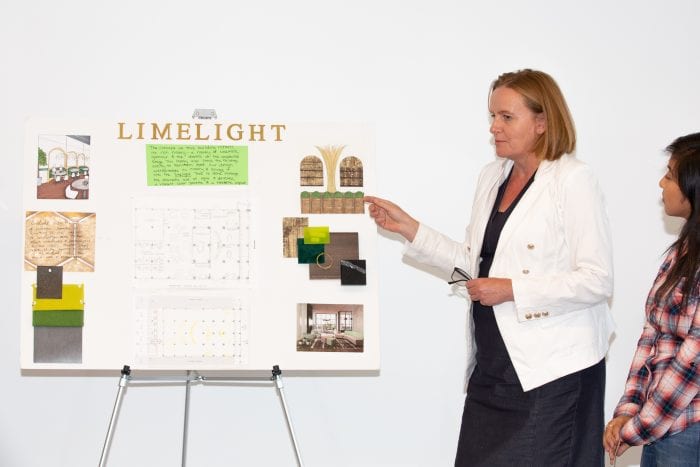From Software Developer to Award-Winning Interior Design Student

Originally from Poland, Interior Design student Anna Grubinski Ossyra spent time in Germany before coming to the U.S. Anna is now pursuing Interior Design as a second career and is minoring in Applied Computer Science, a natural follow-on to her original career in software development. She received an A.A. from College of the Canyons before transferring to Woodbury this semester –- and promptly winning the Woodbury Prize and the IIDA Charette.
Tell us a bit about your personal journey, from Poland and Germany and eventually to the U.S.
I was born in Grudziadz, Poland and moved to Hamburg, Germany before coming to America with my family. Moving is always a big challenge, especially internationally. I learned to speak a foreign language, but most importantly, I learned to adapt. California is the fourth state I’ve lived in, and it’s the state that inspires me the most. I had never experienced such remarkable richness in nature, diversity and life before I moved here.
What attracted you to Woodbury?
The Interior Design program at College of the Canyons gave me a great foundation for my design career. I chose Woodbury mainly for the small size of the campus and classes that allow for individual attention. But I quickly noticed that the support the students receive at Woodbury is unparalleled –- it’s unlike any other school I had experienced before.
To what do you attribute your winning the Woodbury Prize?
I received the Woodbury Prize for my transfer portfolio, an award granted to students who submitted portfolios that show exceptional promise. I credit mentors from my previous schools, along with the great designers I was lucky to work for. They often pushed me outside of my comfort zone.
And you followed that up with the IIDA Charette.
The IIDA Charette was an amazing experience. Organized by the International Interior Design Association, it’s a competition that enables students from 10 different Interior Design programs in Southern California to solve a design challenge. On the morning of the Charette, each student is assigned to a team of five members from different schools. All teams are given the same design challenge, which needs to be completed within four-and-a-half hours and presented to a panel of judges. My team consisted of students who had never met each other before. By working together as a team from start to finish, we won the competition. Additionally, we qualified for the regional IIDA Charette, which will take place in April in Northern California.
Interior Design is your second career. What was it like to transition from software development?
I had worked as a web designer, creating sites for international public organizations and projects sponsored by the European Union. The job was exciting but the projects were short lived. The websites I created expired when the projects ended. My aspiration was to create designs that are more permanent, like living spaces. The web design experience taught me that the most important part of every design is its functionality.
How does Applied Computer Science connect with your Interior Design focus?
The minor in Applied Computer Science will help me combine my experience in software development with Interior Design. I’m planning to implement Virtual Reality and Augmented Reality in my design work, and want to learn how to create interactive installations.
You’re currently seeking an internship for next summer. What might that entail?
I’m looking for a firm that will best fit my circumstances, particularly in the hospitality industry. My dream is to design hotel lobbies, restaurants, and casinos. I’d very much like to apply my experience and my new expertise by combining computer science with interior design in new exciting ways.
You bring more life experience to WU than most students. What’s it like to be in a cohort with all those Gen Z students?
Having a previous career does provide a different perspective. I know what’s required to be successful — and that is experience. Experience includes all the successes, but also all the failures, that we encounter throughout our professional lives. Experience helped me to identify the challenging gap that exists between academia and industry. With that in mind, I recently decided to take action and, with the local chapter of the National Kitchen and Bath Association, started a new program that is free to students and aims to connect them with the design industry. I’m extremely excited about it and thankful for the support I received from the association in creating the program.